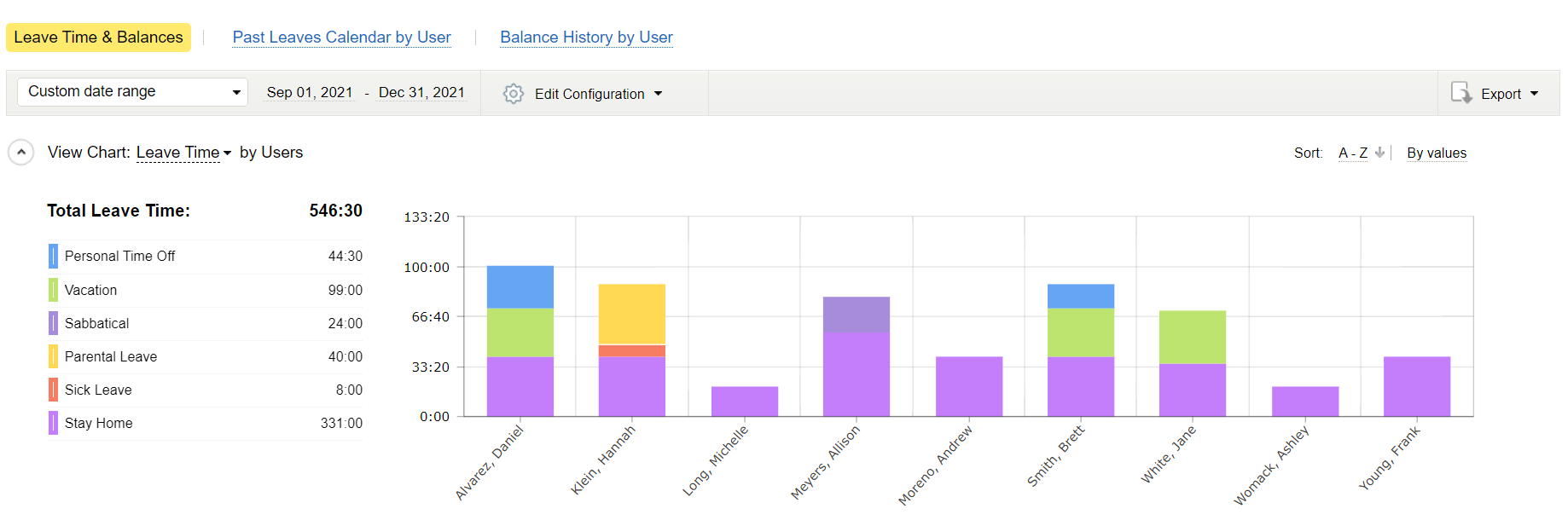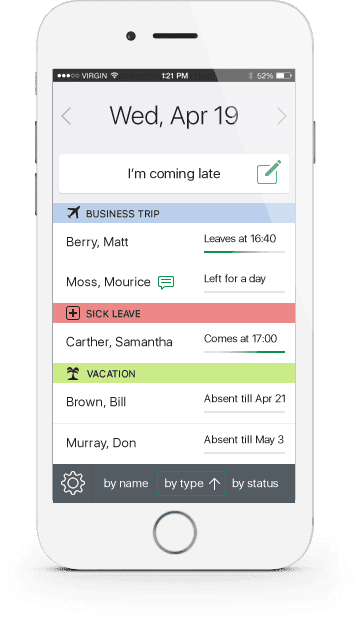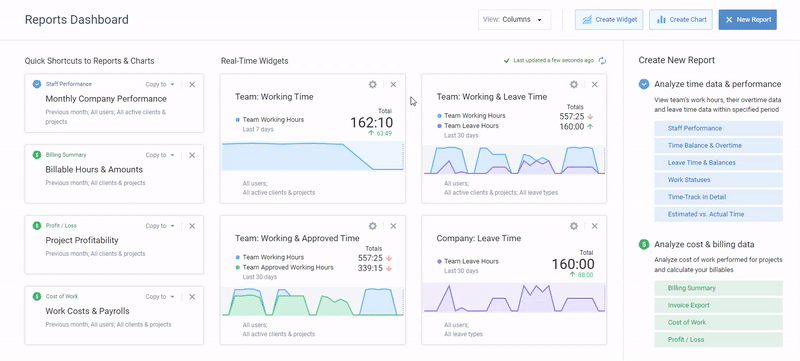The holiday season is fast approaching, and it brings forth the need for many businesses to ramp up their temporary staff for the upcoming rush.
Whether it’s a retail store, restaurant, or delivery service, hiring seasonal employees can be a great way to manage the added high-season workload, keep your customers satisfied and remain profitable as a business. However, before you start the hiring process, it’s essential to understand what seasonal employment is, get familiar with the relevant employment laws, and find the perfect approach to managing your temporary employees.
Luckily, this guide is here to help you navigate through all these aspects of seasonal employment and build an effective strategy for managing temporary employees – so, make sure to read it till the end. 👀
What Is Seasonal Employment?
Seasonal employment is all about timing. It refers to hiring people for specific periods of the year that are usually related to peaks in business performance or increased demand for services.
Seasonal workers are typically employed for only a few weeks or months a year, yet they may work either full-time or part-time hours, depending on your company’s specific needs. The nature of such work is often the same as that of regular employees, with the only difference being that it’s temporary.
Benefits of Seasonal Employment
Whether you run a beach resort during the peak holiday season or stay in charge of snow clearance services during the winter time, seasonal employment can be a great way for you to keep up with sudden changes in demand. Besides that, this type of employment allows you to take your budget under better control and helps to ensure that your business only pays for the labor it needs, when it needs it.
But that’s not all.
Here are a few more benefits that seasonal employment can produce for your business:
- Flexibility in staffing: By employing seasonal workers, businesses can quickly adjust their staff levels to match the changing demand for their products or services. This means that they don’t need to have a full-time workforce all year round, which can help to reduce the costs associated with maintaining a large staff.
- Increased productivity: By hiring seasonal workers who can fill in the gaps and help to carry out the additional tasks that need to be completed during peak seasons, you let your full-time employees focus on their core responsibilities without extra hassle. This approach leads to a well-organized, more productive, and efficient workforce.
- Cost-effectiveness: Hiring a seasonal workforce can be more affordable than bringing on full-time workers, largely because employers don’t have to invest in the long-term development of temporary workers in the company and provide them with a full package of employee benefits. By keeping staffing costs under control while still being able to meet customer demand, your business is sure to maximize its profitability.
Cons of Seasonal Employment
Seasonal employment may seem like a tempting solution for businesses looking to cut costs in the long run, but there are definitely some cons to this approach:
- High training costs: With seasonal employment, you have to invest time and money into training new hires only to have them leave after a short period of time. This can be frustrating and expensive, especially for small businesses with limited resources.
- Low level of employee commitment: Since seasonal workers only come to work for a short time, it may be truly challenging to motivate them to show high-quality performance and commit to their job wholeheartedly. Plus, they may not feel like developing meaningful connections with other employees, which may hinder team morale and slow down collaboration, which can ultimately impact your business performance.
Understanding Seasonal Employment Laws
Employment laws are still in play no matter the season, which means that employers must ensure they are complying with all the rules related to seasonal employment.
The most important legislation includes:
The Fair Labor Standards Act (FLSA) that sets the rules for minimum wage, overtime pay, and child labor.
- You should pay your seasonal staff members at least the federal or local minimum wage (whichever is higher).
- You should also provide them with overtime pay if they exceed 40 working hours a week.
- If your business offers non-hazardous occupations and is allowed to hire 14- and 15-year-olds, you must limit the number of hours they work.
- Seasonal workers must follow the same tax withholding laws as other employees.
The Affordable Care Act (ACA) that requires employers to provide health coverage.
- Applicable Large Employers (ALEs) with 50 or more full-time or full-time equivalent employees must evaluate the eligibility of their seasonal workers for employer-sponsored health insurance, similarly to permanent employees.
- In case seasonal employees are hired to work full time, the employer is required to offer them health coverage by the first day of the fourth month of employment.
- The ACA identifies employees who work for at least 30 hours per week or 130 hours per month as full-time.
The Family and Medical Leave Act (FMLA) that provides leave for eligible employees who need to take care of their family members.
- The act applies to all public agencies without exception, private companies that have at least 50 employees on their staff, and both public and private elementary and secondary schools.
- All employees – including temporary ones – who worked for a company for at least 12 months and 1,250 hours during those 12 months are eligible for FMLA leave.
- Independent contractors are not covered under the FMLA.
Make a Clever Strategy for Managing Your Seasonal Workers
1. Planning
🔸 Anticipate the demand
Hiring for seasonal positions is challenging since many volatile factors can impact the process and its outcome, including market fluctuations, ever-changing industry trends, and even the weather. However, proper planning and preparation for seasonal staffing can make a big difference.
It’s important to take a step back and analyze how many resources you need before jumping into anything. You need to do a lot of forecasting, which can lead to costly results if not done correctly. Still, there are some pretty simple things you can do to anticipate the demand for temporary workers:
- Look at past years’ data to identify trends and patterns and make more informed decisions about your hiring needs.
- Assess the current market conditions and economic indicators to get valuable insights into the demand for seasonal workers.
Additionally, when planning for seasonal employment, ask yourself the following questions:
- What is your peak business time that requires seasonal hiring?
- What positions do you need to fill and how many employees will be needed?
- What are the qualifications and skills required for the different seasonal positions?
All this will help you anticipate the demand for seasonal employees more effectively and meet your staffing requirements without incurring unnecessary costs.
🔸 Consider your budget
To ensure that your business is financially prepared to handle the ups and downs of seasonal hiring and meet your seasonal employment needs, create a budget that carefully outlines the costs associated with hiring, training, and retaining seasonal workers.
Ask yourself these questions:
- What will be the hourly wage or the salary for each seasonal employee?
- Will your recruitment plan involve paid advertisements?
- Are there any financial advantages to hiring independent contractors vs. temporary employees?
- What onboarding costs will there be (e.g., training, time expenses, etc.)?
- How long will your seasonal employees stay on the job?
In addition to accounting for workers’ salaries, your budget should factor in the costs of insurance, equipment, training, and administrative support. So, consider as many various costs as possible to estimate costs accurately and avoid unexpected expenses.
🔸 Allocate and schedule resources
Don’t want your lifeguard twiddling their thumbs during a rainy week or your pumpkin patch worker sitting around once the last pumpkin has been sold?
Yeah, we thought not.
With resource scheduling, you can keep your seasonal staff busy and, more importantly, keep your business running smoothly.
Resource scheduling is all about allocating available resources to meet business needs as efficiently as possible. And while it may sound simple, this task is actually very tricky without the right tools.
That’s where actiPLANS comes in! This handy software can help your business schedule employees with ease, ensuring they’re in the right place at the right time.

With actiPLANS, you can create visual schedules that are easily accessible to everyone on your team, so employees can check their shifts and request time off at any time. The platform also makes it easy to track employee availability and absences, allowing you to avoid mistakes when assigning work.
Plus, actiPLANS features a range of powerful reporting tools that allow you to analyze data on the use of working and non-working time in your team and then make improvements to your resource management decisions.

Overall, if you’re looking for an effective way to manage your employee schedules and ensure that your seasonal workers are utilized to their full potential, actiPLANS is the solution you need. Sign up for a free online trial today and give it a go!
2. Recruitment
🔸 Hire only those looking for seasonal employment
With regard to seasonal employment, always strive to attract and hire candidates who are specifically searching for seasonal work.
- First of all, such candidates usually have the exact mindset and attitude you are looking for – they tend to be more flexible and capable of adapting quickly to the changing demands of the job (although it depends).
- Moreover, hiring workers who are committed to short-term employment helps to avoid the setbacks and consequences of high employee turnover rates.
- And of course, by targeting such individuals, you can greatly simplify the hiring process and avoid unnecessary administrative burdens in the long run.
🔸 Consider using a reliable staffing vendor
By partnering with a staffing company that specializes in seasonal hiring, you can focus on your core operations while leaving the recruitment and selection processes to the experts. Additionally, working with a single reliable vendor allows for greater consistency in both the application and hiring process, ensuring a more streamlined experience for both your business and the job seekers.
🔸 Prioritize retention
There’s no denying that hiring new seasonal employees every year comes with its own set of risks. It’s like going on a series of blind dates and hoping that one of them will stick around for the long haul. But why leave it all up to chance when you have the opportunity to retain those good seasonal employees you’ve already worked with?
Think of it as rekindling an old flame without the awkwardness. Not only will you save time and resources on recruitment, but you also get the added bonus of seasoned (pun intended) workers who know the ropes and can hit the ground running.
So, next time you’re in need of an extra pair of hands or heads, make a list and check it twice for those awesome seasonal hires you already know and love.
3. Onboarding
🔸 Set clear expectations from the very beginning
One of the biggest challenges you may face when working with seasonal employees is staying on the same page with them. Thus, it’s essential not only to communicate what you expect from them but also to ensure that you’ve set up clear goals, rules, and guidelines from day one.
Doing so can help prevent misunderstandings and miscommunications down the line, providing your seasonal employees with a clear sense of direction and purpose. And when you approach the issue with transparency and friendliness, your seasonal employees will feel more confident in their roles and more likely to succeed.
🔸 Provide at least some training
Seasonal employees may be with your company for only a short time, but that doesn’t mean they don’t deserve training. In fact, it’s vital that you educate and inform them to a sufficient extent to ensure they are well-equipped to perform their duties and represent your brand to the best of their abilities.
Not only does training improve the quality of work and customer service, but it also helps to mitigate potential safety issues or legal liabilities. Besides, seasonal employees may not be familiar with your company’s policies, standards, and procedures, and training can help them understand how they are expected to behave.
By investing in your seasonal employees, you’re setting them up for success and demonstrating your value as a responsible employer. Plus, they may even enjoy their time with your company so much that they decide to come back for the next season!
4. Tracking
🔸 Keep an eye on attendance
Every worker, whether temporary or permanent, is an integral part of the team, and their attendance can have a significant impact on productivity and overall performance.
Tracking attendance allows companies to identify potential issues before they have a chance to escalate, and to implement strategies to reduce absences, improve punctuality, and increase engagement. You also need error-free attendance records to pay employees accurately. Plus, proper attendance tracking allows businesses to better manage workloads and improve staffing and ensure that all shifts are covered.
In sum, tracking attendance is an essential part of managing a successful seasonal workforce. And with the help of actiPLANS, this task becomes a breeze.

This software contains a comprehensive absence management functionality with employee self-service features and a truly convenient mobile app. It lets you schedule, track and approve absences with incomparable ease and provides a wealth of data to improve resource planning.
Check out the below post to learn more about absence and attendance tracking with actiPLANS. 👇
🔸 Monitor work progress
Seasonal workers do not have the luxury of time to gradually adapt to their work surroundings. Therefore, they need constant monitoring to ensure that their work aligns with company expectations.
By regularly tracking seasonal workers’ performance progress, you can see whether everything goes as planned, optimize workloads, and identify any areas where you need to provide employees with additional training and support or hire an extra pair of hands.
With the right set of tools, progress tracking is truly effortless, and actiTIME is one of them. It’s a multifunctional project management solution that lets you manage employee workloads, track time spent on tasks, and analyze your productivity data to make informed decisions about staffing, scheduling, resource allocation, and work management at large.

Besides, actiTIME can be seamlessly integrated with actiPLANS, and with both solutions in your toolkit, you’ll be able to streamline your workflow, reduce administrative overhead, and enjoy greater productivity and profitability. So why not give them a try today and see the difference they can make for your business?
5. Motivation
🔸 Treat temps as part of the team
Your seasonal employees do the same job as everyone else, often for the same hours, but with the added pressure of needing to make a good impression in a limited timeframe. Sometimes, they may feel like outsiders, and as you can imagine, it’s not a pleasant feeling. That’s why it’s so important to treat seasonal workers as part of the team.
When they’re treated with respect and made to feel like they belong, it can make a huge difference in their attitude and performance. Plus, showing inclusivity and warmth can go a long way in attracting and retaining good seasonal employees. So next time you’re hiring a temporary worker, treat them as if they’re here to stay, and you might be surprised by how valuable they’ll prove to be.
Conclusion
Hiring seasonal employees is standard practice for many businesses, but it is essential to follow employment laws and have a plan for managing temporary workers. With clear communication, effective training, policies, and procedures in place, you can ensure that your seasonal employees are productive, engaged, and happy, even if their stay is just temporary.
By following the tips mentioned in this guide, you can create a positive experience for both your seasonal employees and your business.





